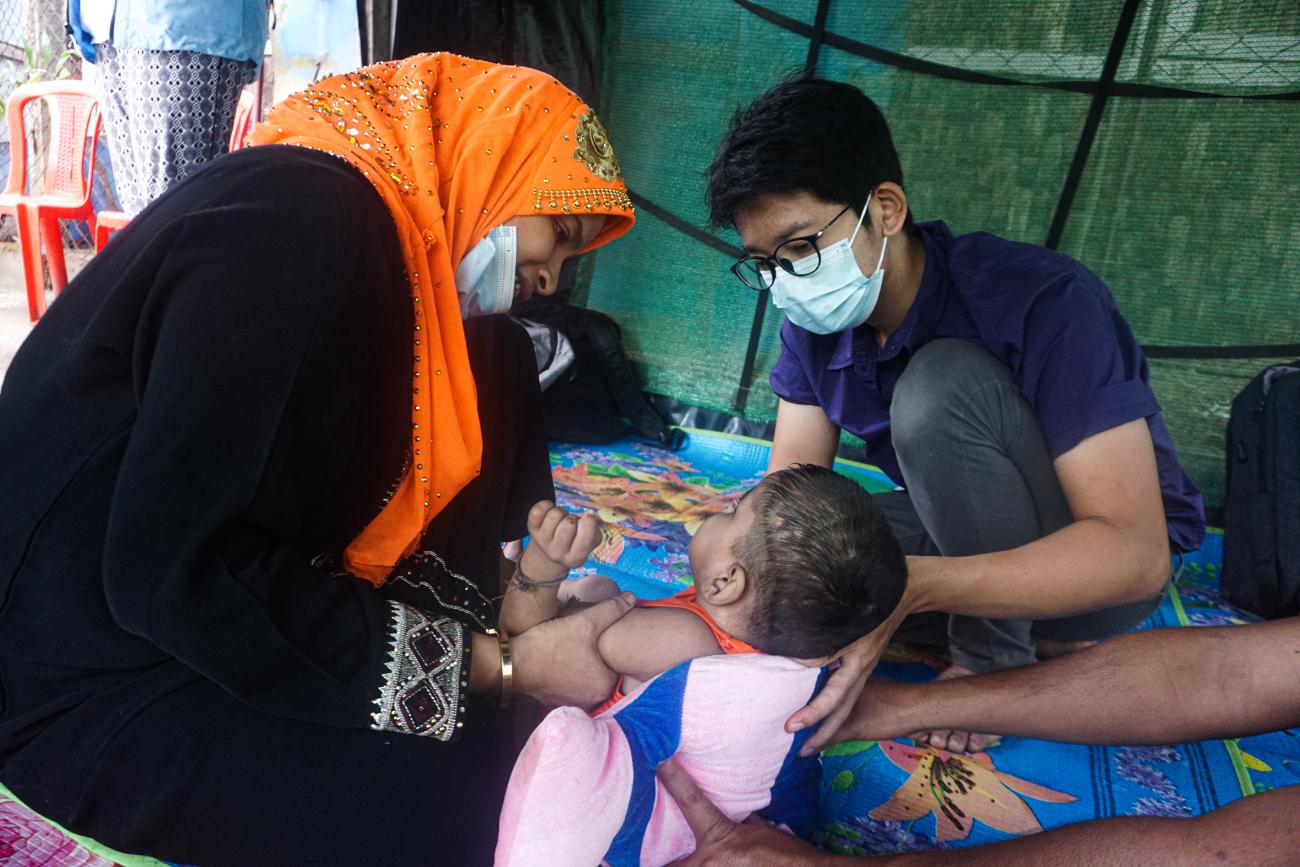Myanmar Humanitarian Fund enables local partners to scale-up life-saving responses to people in need as a result of conflict and COVID-19

The Myanmar Humanitarian Fund enables national and international humanitarian organisations to provide life-saving assistance to vulnerable and displaced people
The Myanmar Humanitarian Fund (MHF), a country-based pooled fund managed by the UN’s Office for the Coordination of Humanitarian Affairs (OCHA), has allocated US$12.4million in 2021 to strengthen humanitarian response efforts to growing needs across Myanmar. This funding is enabling national and international humanitarian organisations to provide life-saving assistance and protection services to vulnerable and displaced people in Chin, Kachin, Magway, Rakhine and Shan states as well as in south-eastern parts of Myanmar, where there has been an increase in humanitarian needs due to conflict since 1 February. As part of the $12.4 million, the MHF has provided $330,000 to national humanitarian partners to top-up their ongoing projects to address the emerging humanitarian needs following escalation of hostilities in Chin, Kachin, Rakhine and Kayin states.
Since 2020, the MHF has allocated a total of $28.5 million to 32 partners, most of whom are national and local humanitarian organisations. These 56 life-saving humanitarian and COVID-19 related projects are contributing to changing the lives of almost 1.2 million people, of whom more than half (56 per cent) are women and girls, almost half (44 per cent) are children and 11 per cent are people with disabilities.
Bringing services closer to the people
“I am overjoyed to see my daughter do remedial exercises without the need to travel far,” said Khadija, a mother of a five-year-old girl with cerebral palsy, from Dar Paing Village, northwest of the capital Sittwe, in Rakhine State. Khadija is among the 345,000 people, who benefited from improved access to primary health care and nutrition services between May and August 2021. The projects have been implemented by national and international humanitarian partners and with the financial support of the MHF. “I am really thankful for the help to run an outpatient therapeutic centre, that is indispensable for families like us,” Khadija said.
Just like other displaced families living in camps or camp-like situations in Rakhine State, Khadija cannot afford to access health services by herself at the medical facility far away from where she lives. Displaced people in Rakhine and in other conflict-affected parts of the country continue to experience significant challenges in accessing basic services, including healthcare, education and livelihoods opportunities. This is where national and international humanitarian organisations are coming in to help by bringing these services closer to affected people with the support of the MHF.
Empowering national humanitarian partners
Wherever possible, the MHF strives to ensure that its funding support goes to national partners, who remain the backbone of humanitarian operations in Myanmar. At the moment, the MHF is directly supporting seven national humanitarian organisations who are delivering lifesaving assistance in Chin, Kachin, Magway, Rakhine and Shan states, as well as in south-eastern parts of the country. There are also 27 humanitarian projects by international organisations funded by MHF that are being implemented in partnership with 40 national organisations. In addition to funding support, the MHF also strives to build the capacity of national organisations in mobilising complimentary resources, including from other funding sources.
Dire humanitarian crisis
The MHF funding is critical in the current context, where around 3 million people need humanitarian assistance and protection services across various parts of Myanmar. This includes about 1 million people living in conflict-affected areas identified at the start of 2021 in the Humanitarian Response Plan. An additional 2 million people have been identified to receive humanitarian assistance and protection services as part of the Interim Emergency Response Plan. The Plan mainly focuses on people in urban and peri-urban areas in Yangon and Mandalay, as well as those displaced or otherwise affected in Chin and Kayin states since 1 February.
The Myanmar Humanitarian Fund
The MHF - one of 19 county-based pooled funds that OCHA manages across the world - brings together the contributions from donors into a single, unearmarked humanitarian fund. Since 2020, the MHF has received US$32.3 million in contributions from a total of 12 donors. The allocations by MHF aim to support projects in line with the strategic objectives of the Humanitarian Response Plan and Interim Emergency Response Plan. The MHF remains flexible in its approach, and together with its Advisory Board, strategises its contributions based on the context and adapts its approach to the changing realities on the ground. For example, in 2020, the MHF made a reserve allocation in the amount of $4 million to boost humanitarian efforts, aiming to ensure a coordinated response to COVID-19 and related support for displaced people and other vulnerable people in conflict-affected areas.


